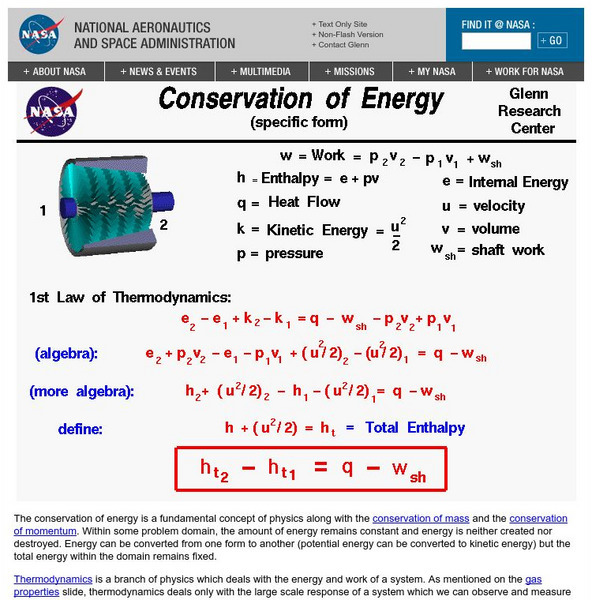National Energy Education Development Project
Energy Works: Yes, Indeed it Does!
Moving from its definition to how it moves and its different types, scholars see different examples and then move into its application and use in everyday lives, in an energy-based presentation.
Curated OER
Skateboard Disaster
Students conduct a hands-on experiment with collisions between two skateboards of different masses. They are introduced to the concept of conservation of momentum in collisions and consider how their observations might help engineers...
Curated OER
Automobile-Accident Reconstruction
Students investigate an accident and relate it to math. In this trigonometry lesson, students measure the accident scene, the friction produced, and the speed from the skid marks. They create a poster of their findings.
Curated OER
What Influences Reaction Rate?
Students study reaction rates, what determines how fast a reaction happens and how the chemical changes occur. In this reactions lesson students complete a lab where they use Alka-Seltzer to observe reaction rate and create a graph...
Curated OER
Collisions and Momentum: Bouncing Balls
Middle schoolers explore the concepts of potential and kinetic energy by bouncing assorted balls on different surfaces and calculating the momentum for each ball. They give examples of collisions and momentum in sports and understand...
Curated OER
Matter
Eighth graders explore chemical reactions and their products. They define a chemical reaction and describe the characteristics of a chemical reaction. Students classify chemical reactions.
Curated OER
Work and Energy
Pupils show that energy is conserved in the laboratory. They calculate the work done by a force on an object as the product of the force and a displacement of the object from a reference point.
Curated OER
Balancing Chemical Equations
Ninth graders explain how atoms and molecules form different substances during chemical reactions and how these processes require losing, gaining or sharing electrons. They correctly write chemical formulas and show how a balanced...
Curated OER
Thermal Energy and Heat Unit
Learners explain that heat energy in a material consists of the disordered motions of its atoms or molecules. They know and explain that transformations of energy usually transform some energy into the form of heat, which dissipates by...
Curated OER
Limiting Reagent
Students work in small groups with a small set of 8 nuts and 5 bolts to assemble into combinations of 1 nut: 1 bolt, and 2 nuts: 1 bolt. They explore the outcome and discuss. Then a student mixes two clear, colorless solutions together...
Curated OER
Bouncing Balls
Students work together to examine how different types of balls react to colliding with different surfaces. They discover the difference between elastic and inelastic collisions. They practice calculating momentum as well.
Curated OER
Particle Physics- Activity Five
In this particle physics worksheet, students use graphs and tables to predict the particles formed during a specific observation event. They complete 5 multi-part fill in the blank questions.
Curated OER
"Water, Water Everywhere and None to Drink"
Ninth graders research the importance of maintaining an unpolluted water source in their community. They work together in groups and brainstorm ideas on what they can do to help. They can also write their local politicians.
Curated OER
Skateboard Science
Learners investigate how skaters can turn in midair. In this physics instructional activity, students relate Newton's Laws to skateboarding. They carry out the maneuver with the help of their classmate.
Curated OER
Chemical Bonding
Eighth graders identify the three main types of chemical bonds. In this chemistry lesson, 8th graders draw Lewis dot diagrams of elements and determine the bond formed. They create a model water molecule.
Curated OER
Cycles Review
Eighth graders discuss the four major cycles of matter. In this general science lesson plan, 8th graders decide which of the four is the most important. They share their opinion in class.
Curated OER
The Ghost Particle
Students collect evidence to make inferences about a object hidden inside a sealed box. They think critically and logically to raise questions. Students identify questions that can be answered through investigation. They formulate and...
Curated OER
Stoichiometry
Students research chemical formulas and balance chemical equations. For this chemical equations lesson students complete a class activity on chemical equations and answer questions.
Curated OER
Impulse/Momentum Lab
Students investigate the relationship between force and momentum using motion detectors and sensors. In this physics lesson, students graph experimental results. They calculate impulse using the area under the graph.
Curated OER
Chemistry: Balancing Chemical Equations
Eighth graders practice balancing chemical equations. In this chemistry lesson, 8th graders explain why it is necessary to balance equations. They complete practice worksheets individually.
Curated OER
Photosynthesis and Respiration
Eighth graders differentiate photosynthesis and respiration. In this biology instructional activity, 8th graders draw a diagram explaining these two processes. They answer a quiz after the instructional activity.
Sophia Learning
Sophia: Physical Science: Conservation of Mass
Created to teach students of the 21st century, Sophia is bringing the laws of mass straight to your fingertips. Become the commander of your own learning experiences as you take part in this brief tutorial. [0:56]
NASA
Glenn Research Center: Conservation of Energy
From the Glenn Research Center at NASA, read about the law of conservation of energy. Included are formulas and many links to key terms.
CK-12 Foundation
Ck 12: Physical Science: Conservation of Mass
[Free Registration/Login may be required to access all resource tools.] The law of conservation of mass and an example.























